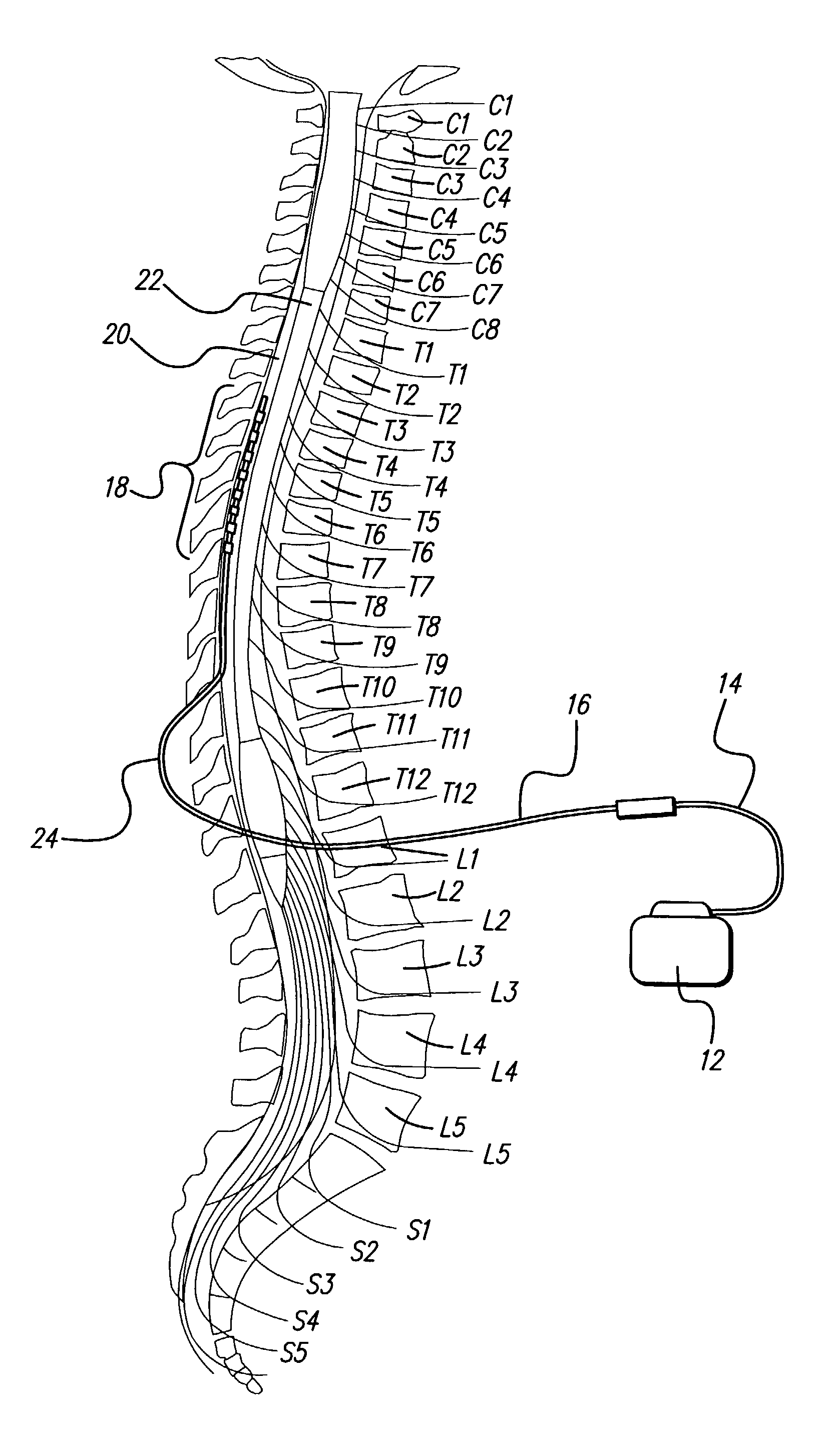Method for increasing the therapeutic ratio/usage range in a neurostimulator
a neurostimulator and therapeutic ratio technology, applied in electrotherapy, therapy, etc., can solve the problems of low therapeutic ratio and not providing much tolerance for changes in patient's activities, and achieve the effects of widening the available control over stimulation level, reducing pain management sensitivity to small changes in patient posture, and reducing pain managemen
- Summary
- Abstract
- Description
- Claims
- Application Information
AI Technical Summary
Benefits of technology
Problems solved by technology
Method used
Image
Examples
first embodiment
[0038]A flow chart of the method of the present invention is illustrated in FIG. 5. The therapeutic ratios for at least two, and preferably more than two, e.g., five, fixed pulse duration stimulation level control strategies are measured as follows: A fixed pulse duration (width) is selected (block 26) from the at least two, or more, fixed pulses durations. Neurostimulation is then provided (block 28) to the patient at the selected fixed pulse duration (width) and varying pulse amplitudes. The pulse amplitude that corresponds to the pulse amplitude where the stimulation is just perceptible to the patient is recorded (block 30). Next, the pulse amplitude that corresponds to the pulse amplitude at which the maximum comfortable stimulation level is perceived by the patient is recorded (block 32). The therapeutic ratio is then computed (block 34) by dividing the pulse amplitude at the maximum comfortable stimulation level by the pulse amplitude at the just-perceptible stimulation level....
second embodiment
[0041]A flow chart of the method of the present invention is illustrated in FIG. 6. As seen in FIG. 6, a fixed pulse duration is selected from at least two, or more, e.g., five, fixed pulse durations (block 82). Neurostimulation is then employed that provides stimulation to a patient at the selected fixed pulse duration (block 84), and at varying pulse amplitudes. The pulse amplitude corresponding to the just-perceptible stimulation level is recorded (block 84). Next, the amplitude-duration (AD) product is computed by multiplying the recorded pulse amplitude of the just-perceptible stimulation level times the corresponding fixed pulse duration (block 88). The pulse amplitude associated with the maximum comfortable stimulation level is also recorded (block 90). The AD product is again computed by multiplying the recorded pulse amplitude of the maximum comfortable stimulation level times its corresponding fixed pulse duration (block 92). A determination is then made as to whether all ...
PUM
 Login to View More
Login to View More Abstract
Description
Claims
Application Information
 Login to View More
Login to View More - R&D
- Intellectual Property
- Life Sciences
- Materials
- Tech Scout
- Unparalleled Data Quality
- Higher Quality Content
- 60% Fewer Hallucinations
Browse by: Latest US Patents, China's latest patents, Technical Efficacy Thesaurus, Application Domain, Technology Topic, Popular Technical Reports.
© 2025 PatSnap. All rights reserved.Legal|Privacy policy|Modern Slavery Act Transparency Statement|Sitemap|About US| Contact US: help@patsnap.com



